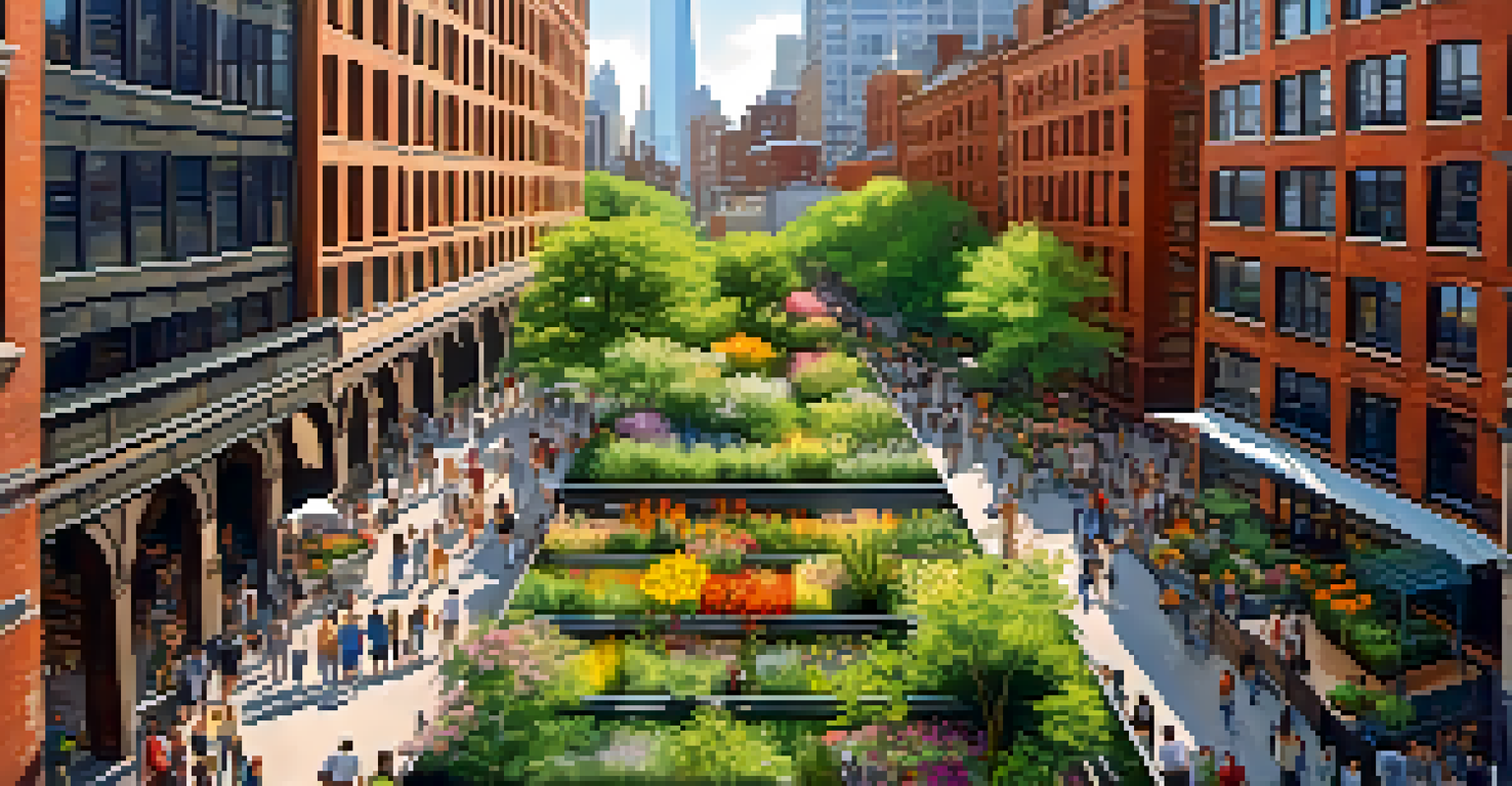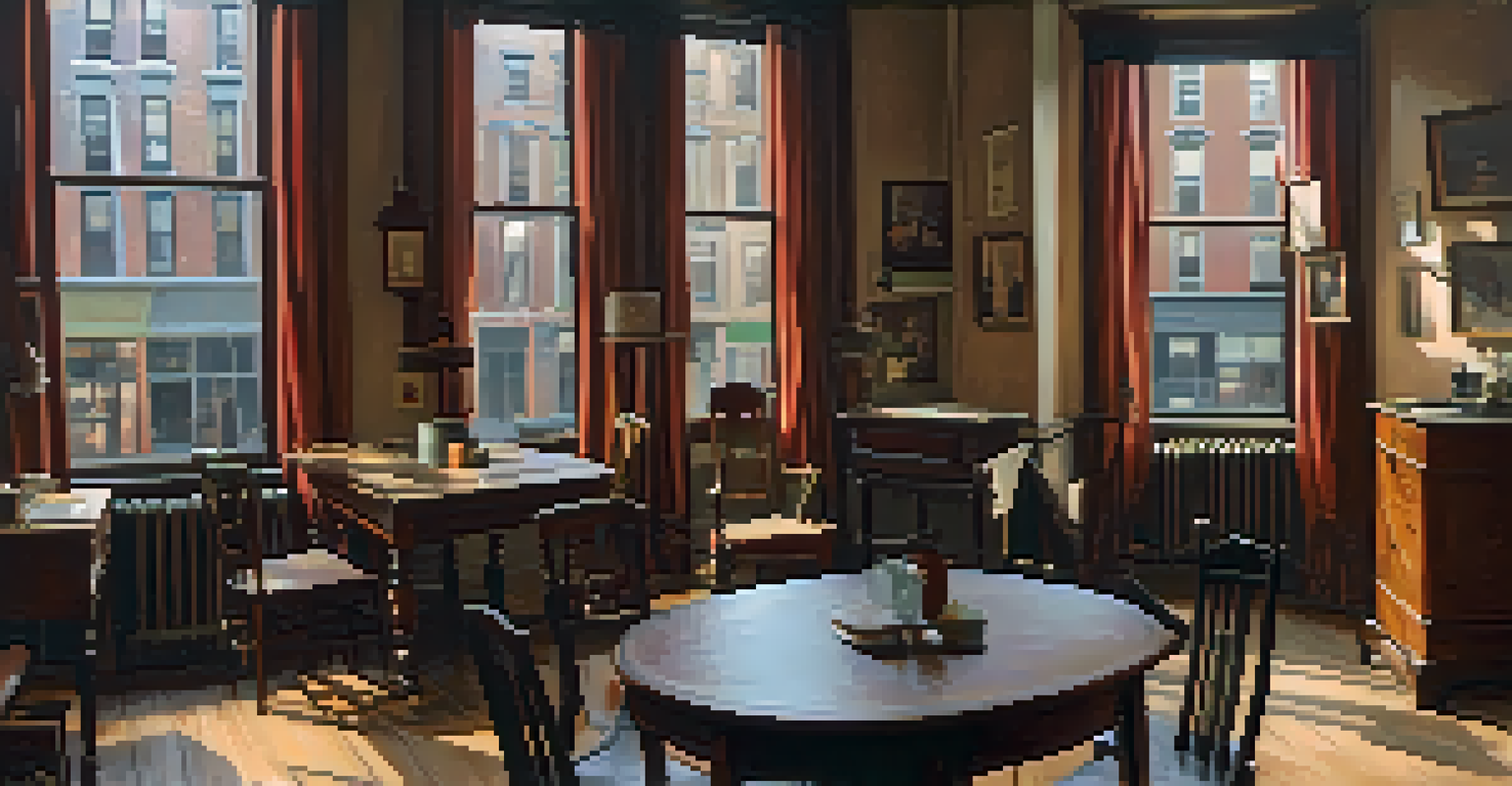The Importance of Historic Preservation in NYC's Urban Landscape

Understanding Historic Preservation in NYC
Historic preservation in New York City involves safeguarding buildings, sites, and neighborhoods that have historical significance. This practice not only honors the past but also promotes cultural heritage and identity within the urban landscape. By preserving these elements, we maintain a connection to the stories and events that have shaped our community.
Preservation is not about the past; it's about the future. It’s about the way we shape our communities and our lives.
NYC is home to a rich tapestry of architecture and history, from the iconic brownstones of Brooklyn to the majestic skyscrapers of Manhattan. Each structure tells a story, reflecting the diverse cultural influences that have contributed to the city's development. Through preservation efforts, we ensure that these stories are not lost to time.
Moreover, historic preservation plays a crucial role in enhancing the aesthetic appeal of our neighborhoods. Well-maintained historic sites can attract tourism, boost local economies, and instill pride in residents. Ultimately, the preservation of our past enriches our present and shapes a vibrant future.
Economic Benefits of Preservation
Preserving historic sites is not just about aesthetics; it also has significant economic advantages. Restoration and maintenance of these properties can lead to increased property values and attract new businesses. By investing in preservation, neighborhoods can revitalize while maintaining their unique character.

Tourism is another vital economic driver linked to historic preservation. Tourists flock to NYC to experience its rich history, and many are drawn to preserved sites. This influx of visitors supports local businesses, from restaurants to shops, fostering a thriving economic environment.
Preservation Enhances Community Identity
Historic preservation fosters a sense of cultural identity and community pride by honoring neighborhoods' unique histories.
Furthermore, preservation efforts often create job opportunities in fields like construction, restoration, and tourism management. By investing in the preservation of historic structures, cities can stimulate job growth while ensuring that their unique heritage is protected for future generations.
Cultural Identity and Community Pride
Historic preservation fosters a sense of cultural identity and community pride. When residents see their neighborhoods honored through preservation, it reinforces their connection to the area's history and heritage. This sense of belonging can strengthen community bonds and encourage local engagement.
Historic preservation is the ultimate form of recycling.
In NYC, diverse cultures have left their mark on the urban landscape, and preserving historic sites allows us to celebrate this diversity. From Chinatown to Harlem, each neighborhood has its unique story, and preservation helps keep those narratives alive. By honoring our history, we embrace the multicultural fabric that makes New York City so special.
Moreover, preserved sites often serve as gathering places for community events and cultural celebrations. These spaces allow residents to come together, share experiences, and build relationships, further enriching the social fabric of the city.
Environmental Sustainability through Preservation
Historic preservation is also aligned with environmental sustainability. By restoring and reusing existing structures, we reduce the demand for new construction, which can be resource-intensive. This approach minimizes waste and lowers carbon emissions, contributing positively to our environment.
Older buildings often have unique architectural features that can be retrofitted for energy efficiency, blending modern technology with historic charm. For example, installing energy-efficient windows or enhancing insulation can help reduce energy consumption while preserving the building’s character.
Economic Boost from Historic Sites
Preserving historic sites stimulates local economies by attracting tourism and increasing property values.
Additionally, nurturing existing neighborhoods through preservation can discourage urban sprawl. By focusing on revitalizing and maintaining historic areas, we promote sustainable urban development that benefits both the community and the planet.
Challenges in Historic Preservation
Despite its benefits, historic preservation in NYC faces several challenges. One significant hurdle is the balancing act between development and preservation. As the city continues to grow, developers often seek to replace old structures with new projects that promise higher profits, which can threaten historic sites.
Another challenge lies in securing funding for preservation efforts. Many historic sites require significant investment for proper maintenance and restoration, and finding financial support can be difficult. Public and private partnerships play a crucial role in ensuring that these sites receive the attention they deserve.
Lastly, there can be resistance from community members who may not fully understand the value of preservation. Education and outreach are essential in helping residents appreciate the importance of these efforts, ensuring that preservation becomes a shared goal rather than a point of contention.
The Role of Government and Organizations
Government agencies and nonprofit organizations play a pivotal role in historic preservation in NYC. The Landmarks Preservation Commission (LPC) is vital in identifying and protecting historic sites, guiding the preservation process. Their work ensures that significant structures receive recognition and support.
Additionally, various nonprofit organizations work tirelessly to advocate for historic preservation. These groups often engage in educational campaigns, community outreach, and fundraising efforts to promote awareness of preservation's benefits. They serve as a bridge between the government and the community, fostering collaboration.
Sustainable Development Through Reuse
Restoring existing structures aligns with environmental sustainability by minimizing waste and reducing the need for new construction.
Furthermore, local neighborhoods often establish preservation committees that empower residents to voice their concerns and ideas regarding their historic sites. This grassroots approach can lead to stronger community involvement and a collective commitment to preserving the area's heritage.
Success Stories of Historic Preservation
New York City boasts numerous success stories that highlight the positive impact of historic preservation. One notable example is the restoration of the High Line, a former elevated railway transformed into a vibrant public park. This project not only preserved a piece of history but also revitalized the surrounding neighborhoods, creating a unique urban space.
Another success story is the preservation of the Tenement Museum, which showcases the immigrant experience in NYC. By restoring historic tenement buildings, the museum offers visitors a glimpse into the lives of past residents, fostering a deeper understanding of the city’s diverse history.

These examples demonstrate how historic preservation can breathe new life into old spaces, making them relevant in today's urban context. Such projects inspire further preservation efforts, proving that honoring our past can lead to innovative and vibrant community spaces.